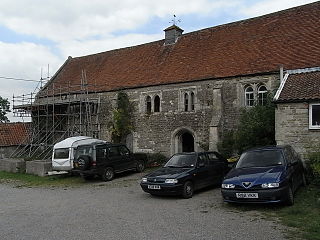
Earl of Essex is a title in the Peerage of England which was first created in the 12th century by King Stephen of England. The title has been recreated eight times from its original inception, beginning with a new first Earl upon each new creation. Possibly the most well-known Earls of Essex were Thomas Cromwell, chief minister to King Henry VIII, and Robert Devereux, 2nd Earl of Essex (1565–1601), a favourite of Queen Elizabeth I who led the Earl of Essex Rebellion in 1601.
Pitchcott is a village and civil parish in the Aylesbury Vale district of Buckinghamshire, England. It is about 3 miles (5 km) north-east of Waddesdon, slightly less than 4 miles (6.4 km) south of Winslow and slightly more than 4 miles north of Aylesbury. It is in the civil parish of Oving.

Myddle—also formerly known as Mydle, Middle, Midle, M'dle, Meadley and Medle—is a small village and former civil parish, now in the parish of Myddle, Broughton and Harmer Hill, in the Shropshire district, in the ceremonial county of Shropshire, England, about 10 miles north of Shrewsbury, the county town of Shropshire. In 1961 the parish had a population of 745.
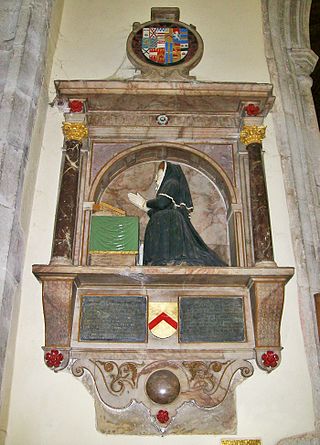
Elizabeth Stafford, also known as Dame Elizabeth Drury and – in the years prior to her death in 1599 – Dame (Lady) Elizabeth Scott, was a Lady of the Bedchamber to Queen Elizabeth I. She and her first husband, Sir William Drury, entertained Queen Elizabeth I at Hawstead in 1578.

Shalden is a village and civil parish in the East Hampshire district of Hampshire, England. It is 2.3 miles (3.7 km) northwest of Alton and 1.9 miles (3.1 km) northeast of Bentworth, just off the A339 road. The parish covers an area of 1,536 acres (622 ha) and has an average elevation of 600 feet (180 m) above sea level. The nearest railway station is Alton, 2.5 miles (4.0 km) southeast of the village. According to the 2011 census, it had a population of 435.

Robert Willoughby, 1st Baron Willoughby de Broke, de jure 9th Baron Latimer, KG, of Brook, near Westbury, Wiltshire, was one of the chief commanders of the royal forces of King Henry VII against the Cornish rebellion of 1497.

Sir Gilbert Talbot of Grafton, KG, was an English Tudor knight, a younger son of John Talbot, 2nd Earl of Shrewsbury and 2nd Earl of Waterford, and Elizabeth Butler.

Grafton Manor was established before the Norman Conquest. Grafton means "settlement at or near the wood" and may indicate a role in woodland management within a larger estate, for instance.

The Great Budbridge Manor is a manor house just south of Merstone, near Arreton, Isle of Wight, England. Fish ponds on the grounds appear medieval.
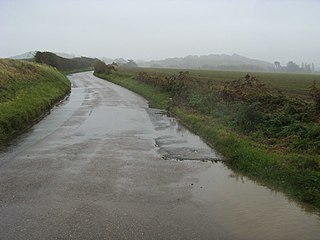
Apse Manor is a manor house on the Isle of Wight, situated just within the eastern boundary of the Newchurch parish. The house is pleasantly situated just to the north of the high road from Shanklin and as of 1912 retained a room with a stone fireplace and a heavy panelled Tudor ceiling.

Sir Humphrey Forster, 2nd Baronet was an English politician who sat in the House of Commons at various times between 1677 and 1695.
Grove Manor is a manor house in the parish of Brading on the Isle of Wight in England.
The surname Denys was borne by at least three prominent mediaeval families seated in Gloucestershire, Somerset and Devon in southwest England between 1166 and 1641. It is not known if any relationship existed between these families. The surname Denys is just one of many variant spellings of the name: Denise, Le Deneis, Le Danies, le Deneys ,and most recently Dennis, are some of the others.
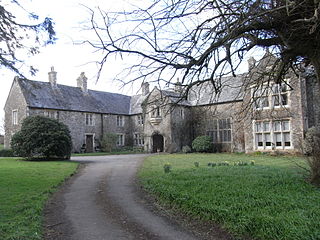
Orleigh is a historic manor in the parish of Buckland Brewer, situated 4 miles to the south west of Bideford, North Devon, England. The manor house is known as Orleigh Court.

Sir Humphrey Stafford,(c. 1341 – 31 October 1413), of Southwick, Wiltshire; Hooke, Dorset; and Bramshall, Staffordshire, was a member of the fifteenth-century English gentry. He held royal offices firstly in the county of his birth, and later in the west country, particularly Devon and Dorset, and has been called 'one of the wealthiest commoners in England' of the period.

Sir Humphrey Stafford"With the Silver Hand", of Hooke in Dorset and of Southwick in the parish of North Bradley in Wiltshire was a member of the English gentry in the south west of England, where he was a Member of Parliament multiple times and an important royal official.
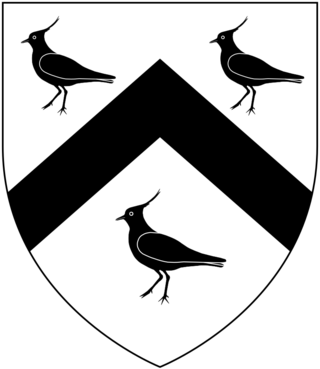
John Twynyho of Cirencester, Bristol and Lechlade, all in Gloucestershire, was a lawyer and wealthy wool merchant who served as Recorder of Bristol, as a Member of Parliament for Bristol in Gloucestershire in 1472-5 and in 1484 and for the prestigious county seat Gloucestershire in 1476. In 1478 he was Attorney General to Lord Edward (the future King Edward V, eldest son and heir of King Edward IV.

William Stafford of Southwick, Wiltshire, was an English gentleman who was killed in June 1450 during Jack Cade's Rebellion, together with his second cousin Sir Humphrey Stafford of Grafton in the parish of Bromsgrove, Worcestershire. Both appear as characters in Shakespeare's play Henry VI, Part 2, in which they are described as brothers.

Southwick Court is a Grade II* listed moated medieval manor house at the centre of a system of fields and water meadows that lie between the town of Trowbridge and the village of Southwick in Wiltshire, England. It has remained a private residence under a succession of owners for at least 800 years. The current house dates from the late 16th century, but its gatehouse is late 15th century. Both were built on the site of an older manor house, dating back to the 13th century or before. Nothing remains of the original house, though the current building sits within the same footprint.











